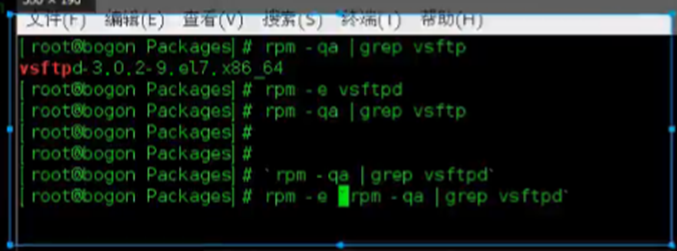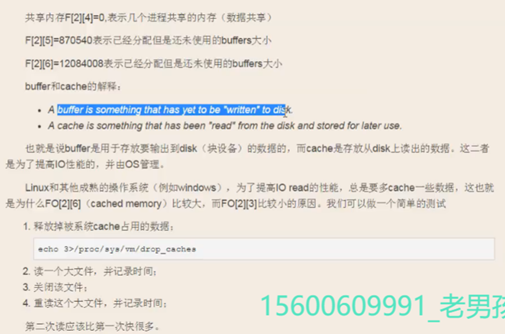命令的真实路径
[root@localhost Packages]# which ls
alias ls='ls --color=auto'
/usr/bin/ls
[root@localhost Packages]#
所以/usr/bin/ls=ls
查看这个文件是哪个软件包产生的
[root@localhost CentOS 7 x86_64]# rpm -qf /usr/bin/ls
coreutils-8.22-18.el7.x86_64
[root@localhost CentOS 7 x86_64]#
命令执行的实际过程:

[root@localhost ~]# alias pipi='ls'
[root@localhost ~]# pipi
a b initial-setup-ks.cfg uu.txt 公共 视频 文档 音乐
anaconda-ks.cfg b.yy.txt pp yy 模板 图片 下载 桌面
[root@localhost ~]#
建函数
alias pipi='gprep firefox'
这个程序只能在一个终端上有效,如果要其他终端上都有效,就要写进文件中
vim /etc/profile 或vim /etc/bashrc 在文件的末尾填上面的命名
反引号可以引入引号内的结果作为输入

创建文件并输入
[root@localhost ~]# vim uu.txt
[root@localhost ~]#
uuuuuuuuuuuuuuuu
按esc -10p就复制黏贴了10行
清缓存的语句
[root@localhost ~]# echo 3 > /proc/sys/vm/drop_caches
[root@localhost ~]# free -m
total used free shared buff/cache available
Mem: 976 580 228 5 167 219
Swap: 2047 2 2045
[root@localhost ~]#
share共享内存:多道(多任务)隔离,给进程之间共享数据用的。
-/+buffers/cache:
used正在使用的buffers/cache
表头的buffers/cache是内存分配出去还没用的
free是还可以分配多少
Cache是我打开电影看,从硬盘放到内存,然后我看完关了,内存先存到cache中不清除,这样我下次打开就快了。所以两次打开的速度是不同的,其实就是缓存
Buffer就是我在word上写了很多,不会时刻都保存到硬盘上,会先到缓存放一会等到数量多才存硬盘。

代替计算器
[root@localhost ~]# echo $[1+2]
3
已经使用的内存663312,分了一部分出去20+103812,真正在使用的是559480,所以内存使用率是559480/1003432
而340120的意思是还可以分配到buffers和cached的内存大小,340120+20+103812=443952
